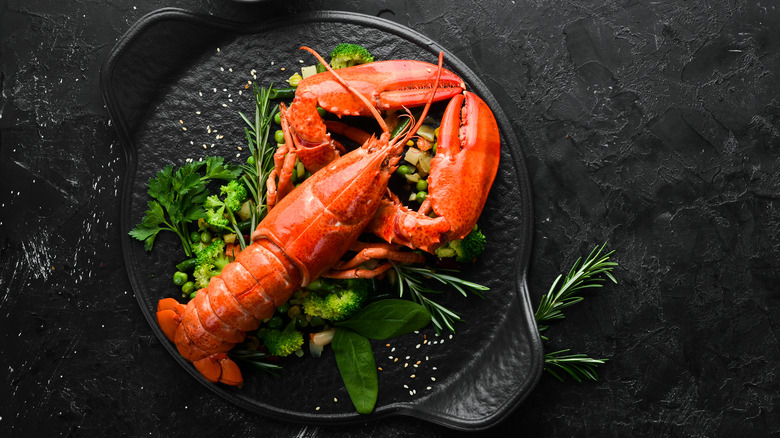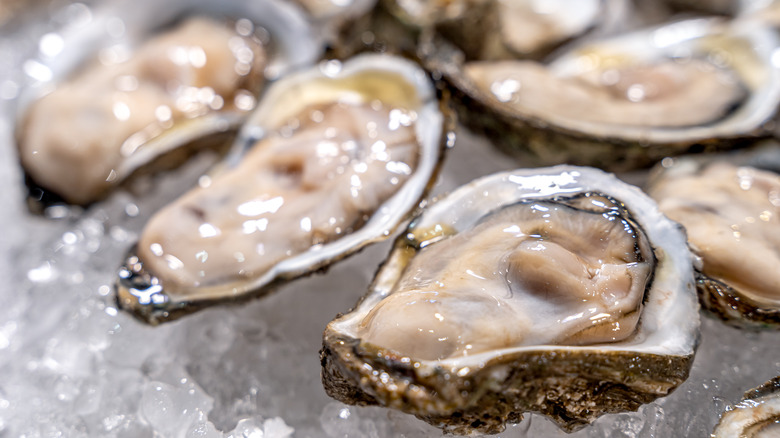The Real Reason Lobsters And Oysters Used To Be Considered Working Class Food
Lobsters and oysters seem to exude an aura of status — and what's surprising about that? If you've ever purchased either, you know they can cost a pretty penny. According to Food Republic, in 2018 the average price of a lobster roll in Boston was $24, with some vendors selling what is essentially scraps of lobster meat thrown in a hot dog bun for as much as $49. Likewise, in most places, oysters can only be harvested seasonally, creating a limited supply. (Some oyster eaters are so serious about this seasonality, they strictly abide by the "r" rule — or only eating the mollusk during the months with the letter "r" between April and September, according to the Florida Museum.) But did you know these delicacies had more humble beginnings, and were once regarded as a working class food?
According to National Geographic, the American lobster (which is the variety most commonly consumed by humans) is native to North America. Its populations were initially so large when European colonists first arrived to the continent, that History shares it was considered "the poor man's protein" and was even used as fertilizer and fish bait.
The reputation of oysters was also cheapened by their wide availability. Plentiful in the New York harbor, oysters were commonly consumed by the working class throughout 19th century, according to The Oyster Gourmet.
Lobsters and oysters: from "working class" to 5-star
The historic affordability and accessibility of both lobsters and oysters poses the question: Why are these foods so expensive now? For lobsters, History explains that the seafood became trendy during the 1880s in Boston and New York City. Prices steadily rose, and the rich became the only ones able to afford these once ubiquitous treats, shutting out the very people responsible for their initial popularity — the working class (via First We Feast).
The Oyster Gourmet shares oysters' similar fate: rising demand led to overfishing, which of course (along with some environmental factors) led to scarcity. As always, high demand and low supply increased prices.
What should we take away from this lesson in perceived value and status? We guess that the modest origins of a food or dish doesn't mean that it can't be enjoyed by all — or that worth is inherent. As they say, demand always drives popularity, and that is exactly what happened in the case of these two popular — and now expensive — seafood delicacies.

